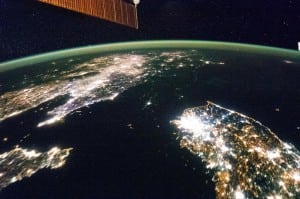Latest News
[Via Satellite 06-24-2014] A new Euroconsult study commissioned by the Cable and Satellite Broadcasting Association of Asia (CASBAA), finds C-band to be an irreplaceable resource for economies in the Asia-Pacific region. Focusing primarily on the markets of India, Indonesia and Papua New Guinea, the study pegged the annual value of the C-band capacity market in Asia at approximately $800 million.
CASBAA requested the study in order to provide information to its members ahead of the International Telecommunication Union’s (ITU) World Radiocommunications Conference (WRC) in 2015. A move to take C-band usage rights from the satellite industry and allot them for terrestrial players is under serious consideration. The satellite industry has largely opposed this idea, and the Euroconsult study reinforces its arguments against reallocating the spectrum.
The study focused on user antennas that operate in C-band in the three aforementioned countries. Euroconsult found all three countries conducted vital services over C-band for political, social and economic purposes including disaster management, education, medicine, national security, air navigation, e-government, and rural communications. To conduct these services, extensive infrastructure is already in place that would require a sizeable effort to recreate. More importantly, C-band has inimitable benefits that make it the spectrum of choice for the Asia-Pacific region, namely its high resistance to rain fade and the availability of wide-area beams.
Thunderstorms and other forms of weather can disrupt higher frequencies, whereas C-band is not so easily attenuated. A sizeable percentage of Asia’s population lives in areas that experience heavy rainfall or monsoons. According to the study, O3b Networks’ Medium Earth Orbit (MEO) Ka-band constellation stands out as an exception to the rule. This is because of its closer orbit and relatively larger user antennas, combined with the fact that O3b specializes in markets that omit television and some Very Small Aperture Terminal (VSAT) services. In most cases, rain fade is not easily overcome using other spectrums.
“Larger antennas also help reception conditions, but only up to a point. In Papua New Guinea, one cable television operator, which also uses Ku-band to receive programming, said it loses connectivity to rain fade even with an 11-meter antenna,” Euroconsult said in the study.
Furthermore, the technology consultancy added that for other purposes, a break in services could be much more costly.
“A bank operating tens of thousands of ATMs, an oil company monitoring production rigs or a ministry of defense receiving live information from a battlefield cannot suspend work for a 20-minute thunderstorm, and if at risk of experiencing rain fade, will prefer using C-band,” wrote Euroconsult.
According to Euroconsult, roughly 61 percent of satellites in the region carry a C-band payload. Asia used 27 GHz of C-band capacity in 2012, which equates to a fill rate of more than 80 percent of capacity supplied, and indicates that C-band accounted for 47 percent of the total satellite capacity used in the region.
“C-band communications are part of the bedrock of daily life and economic activity in tropical Asia,” said John Medeiros, CASBAA’s chief policy officer. “Over the next few months, the international community will be making key decisions on spectrum priorities. Asian governments need to sit up and take notice of the huge contribution by satellite C-band communications to their populations and their economies.”
The study notes that the television industry in the Asia-Pacific region favors C-band over Ku-band because of the very wide beams satellites can form. This works well for large countries in particular as pay-TV operators seek to carry channels to as many platforms as possible. While acknowledging that India and Indonesia are fully covered in Ku-band, the study points out that the few satellites providing such coverage limit it to a small number of transponders. The reason being that delivering a robust signal over such a wide area is a costly practice.
Ku-band capacity is prohibitively expensive for the majority of users, save for large pay-TV platforms, according to the study. Only those with millions of subscribers can afford the high cost. Furthermore, Low Noise Block-Converters (LNBs), the most costly part of a VSAT antenna, require more precise fabrication at higher frequencies. The high power transponders that are partially able to resist attenuation by rain fade drive up costs compared to C-band.
Euroconsult estimates that 12 to 17 million C-band antennas are used for individual television in Indonesia. Thailand uses between 4 and 12 million, and India uses roughly half a million. The study identifies more than 175,000 C- band VSATs playing diverse roles in Asia-Pacific telecommunications. More than half of the television audiences in India and Indonesia use C-band, along with a significant portion of Papua New Guinea. As WRC 2015 edges closer, studies like this will certainly add to the debate over how to best use C-band.
Get the latest Via Satellite news!
Subscribe Now